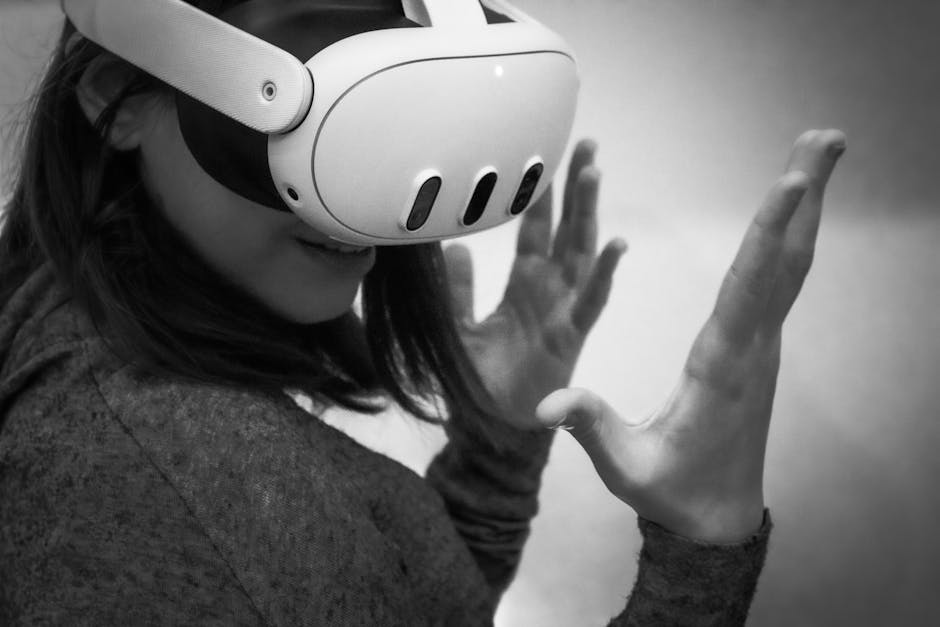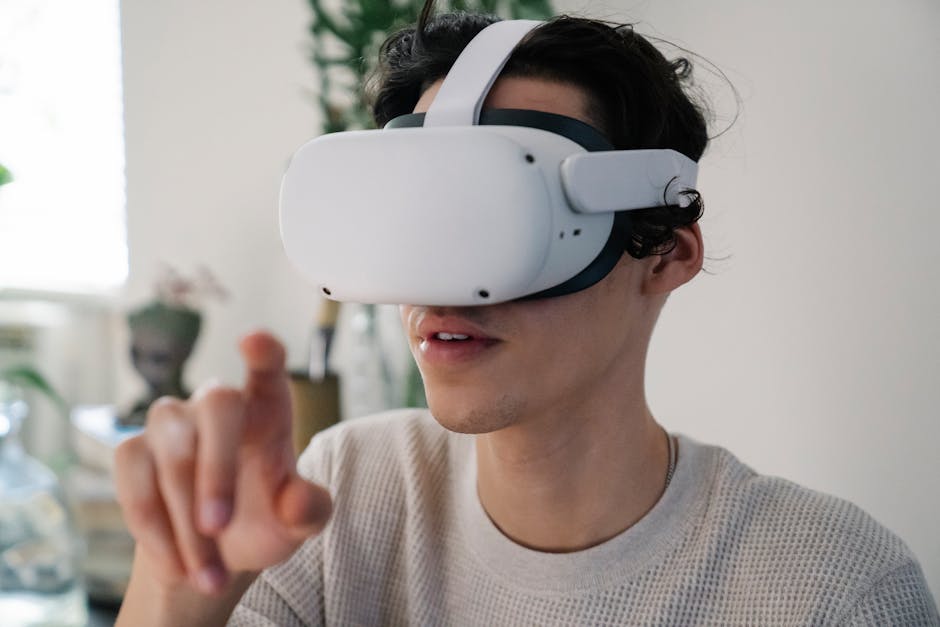Transform User Engagement with Virtual Reality: A New Era of Marketing
In recent years, the digital landscape has transformed dramatically, shifting the way brands interact with their audiences. With the rise of immersive technology, brands have begun leveraging virtual reality (VR) experiences to captivate and engage consumers like never before. This shift prompts an exploration into how VR can affect user engagement and conversion rates, especially in our increasingly digital world.
Understanding Virtual Reality in Marketing

Virtual reality takes users out of their physical surroundings and immerses them in a 3D environment that can be manipulated and controlled. By offering engaging experiences rather than traditional two-dimensional advertisements, brands can create a lasting emotional connection with consumers. This approach is known as immersive marketing, and it's changing the way businesses attract, engage, and convert customers.
According to a study by the Harvard Business Review, consumers are more likely to recall brands that utilize VR due to the emotional and cognitive engagement it elicits. Instead of simply observing an advertisement, users experience the product or service firsthand, often leading to higher conversion rates and improved customer loyalty.
The Power of Immersion: Why It Matters

Immersion is a core component of user engagement, and VR is designed to provide high levels of immersion. The experience makes users feel as though they are part of the action, creating a memorable interaction that can significantly influence their buying behavior. In fact, brands that have adopted VR into their marketing strategies report up to a 70% increase in conversion rates.
Consider the case of a leading automotive brand that used VR to allow customers to virtually test drive a new car model. By offering a realistic simulation, the company was able to generate interest and inquiries, translating virtual experiences into real-world sales. This approach exemplifies how emotional connections can lead to tangible results.
User Engagement: Building Emotional Connections

One of the primary goals of any marketing strategy is to build rapport with potential customers. Virtual reality has the unique ability to create emotional connections through an engaging experience that resonates with users on a personal level. Through storytelling, brands can immerse customers in a narrative, making them feel like a vital part of the story.
Take for example travel agencies using VR to showcase exotic destinations. By transporting travelers into the sun-soaked shores or bustling streets of a foreign city, these agencies can significantly enhance the emotional appeal of a vacation, making potential customers far more inclined to book their next journey.
Moreover, the emotional and cognitive involvement that VR promotes can lead to what marketers refer to as “choice overload.” While consumers enjoy being immersed in options, they might crave assistance in making a decision. Brands can use this to their advantage by guiding them through VR experiences that help narrow their choices.
Conversion Rates: The Numbers that Matter

So how does this all translate into increased conversion rates? The answer lies in the compelling experiences that VR can offer. When consumers engage in virtual environments, they perceive value beyond the product itself. A VR experience creates a memorable impression, enhancing brand recall and loyalty.
Research has shown that immersive marketing tactics result in a 60% higher likelihood of product purchase than traditional advertising methods. This is primarily due to the strong emotional connections users form with brands that utilize VR. They feel a sense of connection that conventional advertisements simply cannot replicate.
Furthermore, VR also minimizes friction in the customer journey. This means that potential buyers experience fewer obstacles when transitioning from awareness to interest, and ultimately to the decision-making phase. By providing instant satisfaction through engaging experiences, brands see increased conversion rates as users are encouraged to take action.
Practical Applications: Implementing VR in Your Marketing Strategy

To harness VR's potential, it’s essential for brands to carefully craft their immersive experiences. Here are some practical applications for businesses looking to incorporate VR into their digital marketing strategies:
-
Product Demonstrations: Many brands, particularly in cosmetics or technology, utilize VR to create interactive product demos. Think virtual eyeliner applications or trying on the latest gadget with just a VR headset.
-
Virtual Events: Hosting virtual expos or showcase events allows brands to interact with their consumer base in real-time. Organizations can design immersive environments mimicking actual conferences, providing attendees with the experience of being part of a physical event.
-
Experiential Storytelling: Brands can narrate their story through VR, creating an emotional journey for users. This could involve showcasing the brand's origin story, its commitments to sustainability, or interactive experiences that highlight product benefits.
-
Gamified Experiences: Turning the shopping experience into a game can enhance user engagement. Brands can create challenges or interactive experiences where users unlock rewards during their virtual exploration.
Challenges to Consider When Implementing VR

While the benefits of VR marketing are compelling, it’s essential to acknowledge potential challenges. Accessibility is one of the largest hurdles; not all consumers have access to advanced VR hardware. Brands must consider how they can offer immersive experiences on different platforms, including mobile devices.
Moreover, the development of VR content may require a significant initial investment. Brands need to analyze their strategic objectives and ensure that the expected ROI justifies the costs. Collaborating with experienced VR content creators can also streamline this process.
External Insights into VR Marketing Trends

According to a recent report from Harvard Business Review, the VR marketing landscape will significantly evolve over the next few years, emphasizing the importance of personalized experiences. Brands that successfully target individual customer preferences with interactive VR experiences are more likely to thrive.
Additionally, platforms such as Moz have explored the optimizations required to enhance SEO for VR content. Integrating SEO strategies with immersive marketing initiatives can yield incredible results—leveraging keywords and enhancing user experiences simultaneously.
Future Trends: What Lies Ahead for VR Marketing?

Looking ahead, virtual reality is set to play an even larger role in digital marketing strategies through 2025 and beyond. The intersection of technologies such as AR (augmented reality) and AI (artificial intelligence) is expected to redefine immersive marketing approaches. For instance, businesses may adopt AI-driven emotional targeting alongside VR experiences for precise targeting and personalized content delivery.
As brands focus on creating hyper-personalized experiences, the fusion of consumer insights and VR will enable extraordinarily compelling marketing campaigns. By unlocking the emotional resonance of immersive experiences, brands can elevate their marketing strategies to new heights.
Next Steps: Embrace the VR Revolution
It’s time for brands to embrace immersive marketing—a dynamic approach that goes beyond conventional strategies. By investing in virtual reality experiences, organizations can enhance user engagement, deepen emotional connections, and drive increased conversion rates.
As consumers continue seeking engaging, interactive experiences, integrating VR into your marketing strategy may not just be beneficial; it could be essential for long-term success.
In closing, the potential of virtual reality to transform user engagement and conversion rates is only beginning to be fully realized. For brands willing to take the plunge, the rewards can be immense. Reflecting on how you can leverage VR technology within your digital marketing strategy could be the next step toward revolutionizing your engagement methods.
Final Thoughts
The impact of virtual reality on user engagement and conversion rates is profound. As technology continues to evolve, integrating VR into marketing strategies will allow businesses to create unforgettable experiences for their customers. By planting your brand firmly within the immersive marketing landscape, you can connect more deeply with your audience and drive remarkable business results.
For more insights into digital marketing trends, see our articles on unlocking AI-driven emotional intelligence and the future of SEO strategies in 2025.



